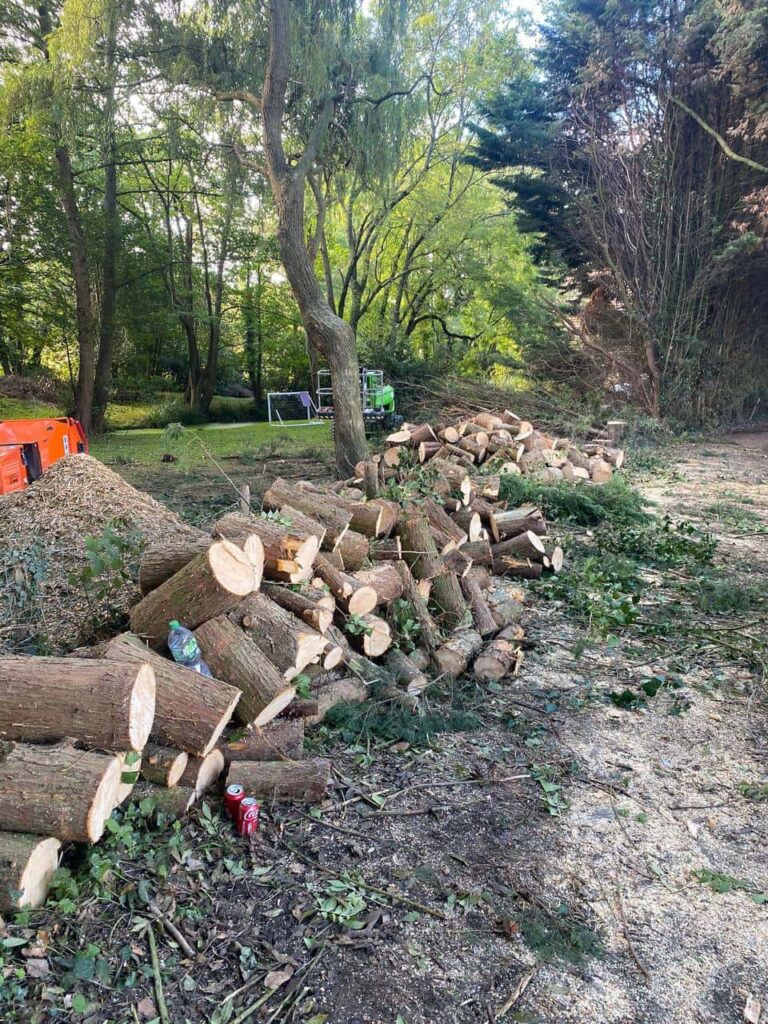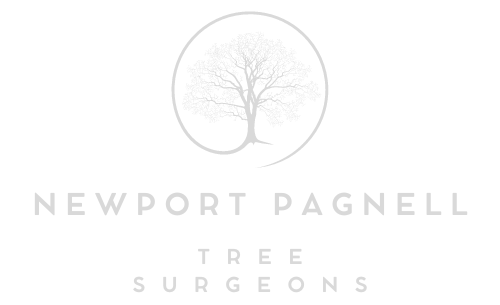When a Tree Becomes Top-Heavy: What to Do Before It Falls
A mature tree is an asset to any garden or landscape, providing shade, visual appeal, and environmental benefits. However, when a tree becomes top-heavy, it poses a serious risk to nearby structures, people, and property. Without timely intervention, what begins as an imbalance in the canopy can result in a dangerous collapse — especially during high winds or periods of heavy rain. At Newport Pagnell Tree Surgeons, we assist homeowners and property managers across Newport Pagnell, Buckinghamshire in identifying and dealing with top-heavy trees before they become hazardous.
In this post, we’ll explain how to spot when a tree is top-heavy, what causes the condition, and what steps you should take to manage it safely and effectively.
What Does It Mean When a Tree Is Top-Heavy?
A tree is considered top-heavy when the upper canopy has grown disproportionately large or dense compared to its trunk and root system. This can affect the tree’s structural stability, making it more susceptible to windthrow (being blown over) or branch failure.
Common signs of a top-heavy tree include:
- A noticeably large or dense upper canopy
- Branches leaning heavily to one side
- Cracks forming in the trunk or at branch junctions
- Root movement or soil upheaval at the base
- Excessive swaying during windy weather
What Causes a Tree to Become Top-Heavy?
1. Lack of Regular Pruning
- Without periodic maintenance, trees can grow unchecked, producing long, heavy limbs that overburden the canopy.
- This is particularly common in ornamental and fast-growing species.
2. Over-Fertilisation or Poor Soil Conditions
- Excess nutrients may encourage vigorous top growth without strengthening the root system.
- Shallow or compacted soil can also limit root anchorage, making the tree less able to support its upper weight.
3. Previous Poor Tree Work
- Improper pruning techniques, such as topping or uneven crown lifting, can lead to unbalanced growth patterns.
- DIY pruning or neglect of structural integrity often causes long-term issues.
4. Environmental Factors
- Storm damage or competing trees can result in a tree growing lopsided as it reaches for light.
- Wet weather softens the soil, reducing root stability at critical times.
Why It’s a Risk That Shouldn’t Be Ignored
A top-heavy tree may appear healthy on the surface, but it can fail suddenly under pressure. This is especially dangerous when trees are located near:
- Homes or garages
- Roads and footpaths
- Play areas or gardens
- Overhead cables or outbuildings
The risk of serious injury, costly damage, or disruption is real — and preventable with proper care.
What You Should Do If You Suspect a Tree Is Top-Heavy
Step 1: Arrange a Professional Assessment
The first and most important action is to have the tree assessed by a qualified arborist. At Newport Pagnell Tree Surgeons, we offer thorough tree inspections throughout Newport Pagnell, Buckinghamshire. We look for signs of stress, disease, structural weakness, and canopy imbalance to provide a clear recommendation.
Step 2: Consider Crown Reduction
In many cases, crown reduction is the most effective solution. This involves carefully reducing the size and spread of the upper canopy to:
- Rebalance the tree’s structure
- Reduce wind resistance
- Minimise the chance of branch failure
- Encourage healthy regrowth in the right areas
The goal is not to drastically cut back the tree, but to manage its shape and stability while preserving its health.
Step 3: Support with Cabling or Bracing (If Suitable)
In some situations, non-invasive support systems such as bracing or cabling can be installed to reinforce vulnerable limbs or junctions. These are used mainly for trees of high value or where removal isn’t a viable option.
Step 4: Monitor for Change
After corrective work, it’s essential to continue monitoring the tree, particularly during stormy seasons. Signs of improvement include reduced swaying, less leaf drop, and even canopy growth.
We offer ongoing maintenance schedules for trees across Newport Pagnell to ensure long-term safety and health.
Step 5: Removal (When Necessary)
Unfortunately, not all trees can be saved. If a tree is too unstable, severely decayed, or poses an immediate danger, removal may be the safest option. We carry out safe, controlled tree felling using professional techniques, and always with minimal disruption to the surrounding area.
Why Choose Newport Pagnell Tree Surgeons?
We specialise in expert tree care for domestic and commercial clients across Newport Pagnell, Buckinghamshire. Whether your tree needs light pruning or full-scale reduction, we offer:
- Qualified arborists with years of experience
- BS3998-compliant pruning and reduction
- Detailed tree risk assessments and reports
- Emergency response for dangerous trees
- Clean and tidy site management
Our priority is to protect your property while preserving the trees that enhance it.
Conclusion
A top-heavy tree is more than a cosmetic concern — it’s a safety issue that can escalate without proper intervention. If you’ve noticed a tree on your property leaning, swaying, or appearing out of proportion, don’t wait until it becomes a hazard. Professional assessment and timely crown reduction can restore stability and prolong the life of the tree.
For expert tree care in Newport Pagnell, Buckinghamshire, contact Newport Pagnell Tree Surgeons. We’re here to provide honest advice, practical solutions, and safe results that protect both your property and the natural landscape.
Call us on: 01908 103 982
Click here to find out more about Newport Pagnell Tree Surgeons
Click here to complete our contact form and see how we can help with your tree care needs.

